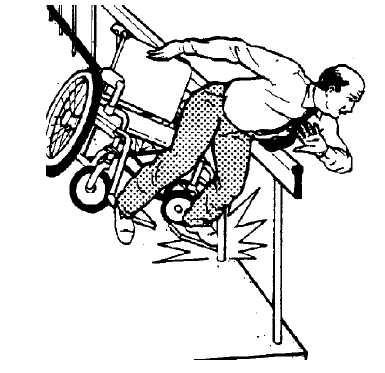Withdrawn Technical Assistance: Common ADA Errors and Omissions in New Construction and Alterations
Introduction
The ADA requires that new construction and alterations to existing facilities comply with the ADA Standards for Accessible Design 1 (Standards). ADA requirements for new construction and alterations include detailed provisions for elements, spaces, and facilities. Successful accessibility is often measured in inches, so attention to detail can make the difference between achieving access and excluding or injuring someone. When the ADA's minimum requirements are not met, the results can limit or exclude a person with a disability and can be dangerous. For example, when a curb ramp extends into an access aisle at an accessible parking space, a person using a wheelchair may not be able to get out of the car or van. When the slope of a sidewalk that is an accessible route becomes steeper than 1 to 20, railings and edge protection are required for safe use. Objects that project into circulation spaces from the side or that do not provide at least 80 inches of head clearance can be extremely hazardous to people who are blind or who have low vision.

This document lists a sampling of common accessibility errors or omissions that have been identified through the Department of Justice's ongoing enforcement efforts. The specific requirement of the Standards that has not been met follows each error/omission. All references to figures can be found in the Standards. The list of errors/omissions provides examples of common deficiencies. It is not intended to be comprehensive or exhaustive. Any failure to comply with the Standards violates the ADA.
For additional information about the design and construction requirements of the Americans with Disabilities Act (ADA), contact the Department of Justice ADA Information Line. This free service provides answers to general and technical questions about ADA requirements and is a source for free ADA materials including the ADA Standards for Accessible Design. You may reach the ADA Information Line at:
800 - 514 - 0301 (voice) or 800 - 514 - 0383 (TTY).
ADA information is also available on the Department's ADA Home Page on the World Wide Web at (http://www.usdoj.gov/crt/ada/index.html).
Reproduction of this document is encouraged.
1 State and local governments currently have the option to choose the Standards or the Uniform Federal Accessibility Standard (UFAS).

User Comments/Questions
Add Comment/Question